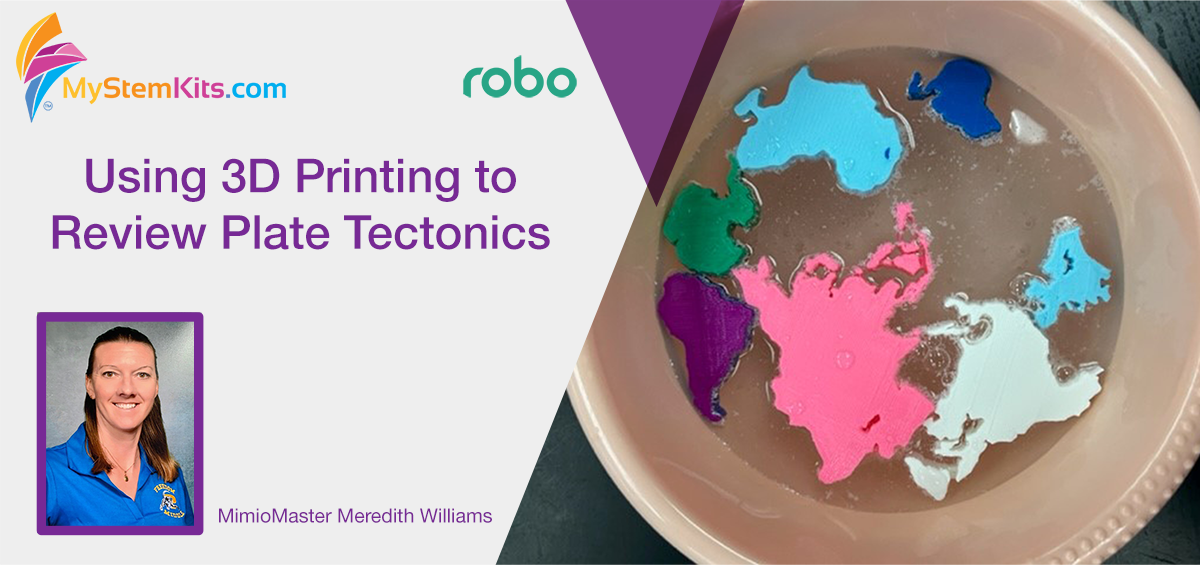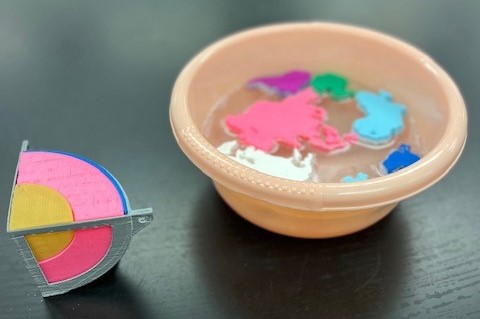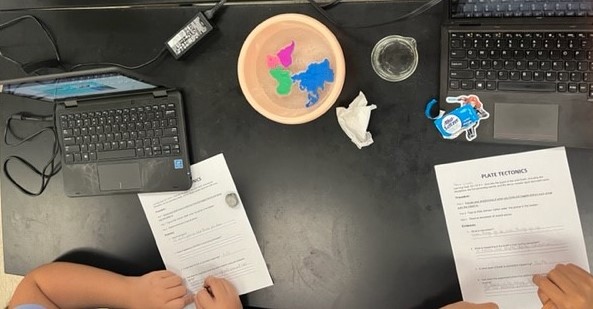
In this lesson, our STEM MimioMaster Meredith Williams shares how she used the MyStemKits Continents Kit and Earth Layers Kit to review plate tectonics.
Plate Tectonics
STEM Supplies:
- Continents Kit from MyStemKits
- Earth Layers (Compositional) Kit from MyStemKits
Note: Prepare a set of materials from each kit for each group of 3-4 students
- Effervescent antacid tablets, 2 per group of students
- Bowls, 1 per group of students
- Beakers, 1 per group of students
- Access to water
- Teacher-created lab sheet
- Pencils, colored pencils

Grade Level: 7-8
Objectives: Students will -
- identify the Earth’s layers and review convection currents
- Describe the scientific theory of plate tectonics
Time frame: 40-50 minutes
CPALMS (Florida) Standards
- SC.7.E.6.1 - Describe the layers of the solid Earth, including the lithosphere, the hot convecting mantle, and the dense metallic liquid and solid cores.
- SC.7.E.6.5 Explore the scientific theory of plate tectonics by describing how the movement of Earth's crustal plates causes both slow and rapid changes in Earth's surface, including volcanic eruptions, earthquakes, and mountain building
Lesson Description
First, we started by reviewing the layers of the geosphere by discussing the mantle and convection currents. Each group of 3-4 students had the Earth Layers kit that they were able to take apart to identify each layer and compare their sizes. Students were amazed at how thin and fragile the crust is compared to the rest of the layers. They were able to see how much bigger the mantle was and fully understand where the convection and movement of the magma occurs. We had great discussions!
Then we proceeded to discuss the types of plate movement. Each student had a lab sheet and had to draw the three different types of boundaries: divergent, convergent and transform. We reviewed characteristics of each boundary, and they were able to draw and identify each type.

Afterwards, we started the lab portion of the lesson. Each group of students had a bowl with 3D-printed continents from the Continents kit and a beaker which they needed to fill with 500 mL of water. After pouring the water into the bowl, students noticed immediately that the continents were floating; they made the connection that crust “floats” on the mantle.

We then took one effervescent antacid tablet and placed it in the water. The bubbling moved the continents around, but all groups' continents were moving differently. Students were able to see the converging continents, diverging continents and some even had transform boundaries. As we let the water settle, we discussed what each group saw and why these movements occur. We then took the second effervescent antacid tablet and added it to the water. We watched the continents move and shift again but differently this time. I explained that pressure builds in various locations around the world and though some locations are more prone to seismic activity, it does not always occur in the same location.
This lesson was a huge success with both MyStemKits kits. The class was involved in great discussions and ‘aha’ moments! The plate tectonics theory is a challenging concept for many to understand because it is such a slow process involving large masses of land that it is difficult for students to visualize. The visualization of the 3D printed continents moving on the water helped students see what actually occurs within the earth's mantle and how that shifts and moves the crust.
To see videos on each of these kits, click below:
Interested in learning more about the award-winning MyStemKits and Robo 3D printer? Visit boxlight.com/products/stem-education.


